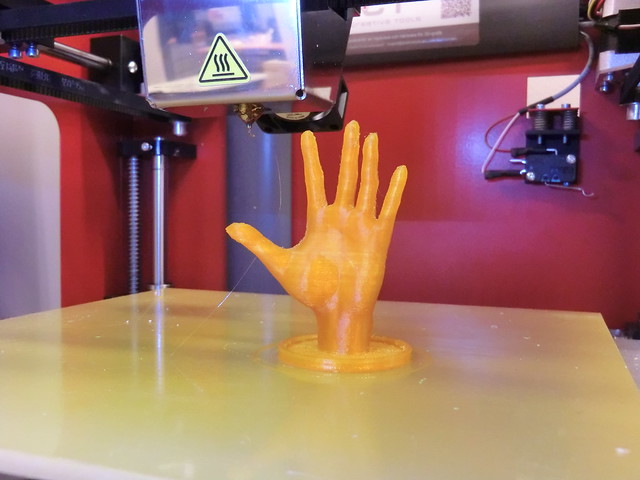An interesting article titled “The use of 3D model planning in the management of impacted teeth” written by Scott et al. appears in the 2018 edition of Oral Surgery (vol. 11, pp. 125-130). The article discusses using surgical planning using a 3D printed model for removal of an impacted wisdom tooth in a 61 year old man. 3D printing for wisdom teeth removal has been discussed on this site before see the post 3D Printed Models for Wisdom Teeth Surgery Planning.
In the article by Scott a discussion is made of how computed tomography scans can be taken of the mouth to determine the exact position of a lower wisdom tooth in relation to the inferior alveolar nerve. Using stereo lithography it is then possible to manufacture 3D printed models from the scans. This allows one to simulate the exact anatomy of the patient’s mouth and teeth. The relative cost of using such an approach has been decreasing and this makes it more attractive for use.
The authors describe the case of a 61 year old man who presented complaining of of facial swelling and limited mouth opening. A dental panoramic tomograph was taken and showed an unerupted ectopic wisdom tooth above the angle of the mandible and directly beneath the last standing erupted molar, in close relation to the mandibular canal. A computed tomography scan was then taken to further assess the relationship of the tooth with anatomy nearby. It was discovered that the inferior alveolar nerve was in close proximity to the roots of the wisdom tooth. The patient’s swelling began to increase and he was admitted to a hospital for 24 hours and given antibiotics.

In order to assist with surgical removal of the tooth a 3D model was constructed to allow for visualization of the position of the tooth. This allowed the surgeons to view the local anatomy and determine the most minimally invasive way to remove bone and take out the tooth with the least amount of impact to the surrounding neurovascular structures. This model as served as a talking point with the patient as part of the informed consent process. The patient was warned of a high risk of altered sensation and paraesthesia to the lip and chin along with weakness to the facial nerve based on the surgical route taken. The surgeons planned for multiple routes because of the active infection. During actual surgery the crown of the tooth was sectioned and elevated and the roots of the tooth were seen to surround the inferior alveolvar nerve. During surgery the roots were able to be removed. The authors state
“It was clear throughout the procedure, that due to the use of a 3D model, the surgery held little surprise as the model mimicked the patient’s anatomy precisely: The close relationship between the tooth and IAN [inferior alveolvar nerve] was completely anticipated and the nerve left intact…”
The patient did experience some mild tingling in the nerve after surgery but was expected to recover completely. The authors feel that using 3D imaging and 3D printed models for complicated impacted wisdom tooth surgery cases is beneficial and can allow for leaving the lingual nerve and inferior alveolvar nerve intact. They feel that 3D models are useful for surgical planning that leads to better improved outcomes and an increase in communication among both patients and the dental team.
